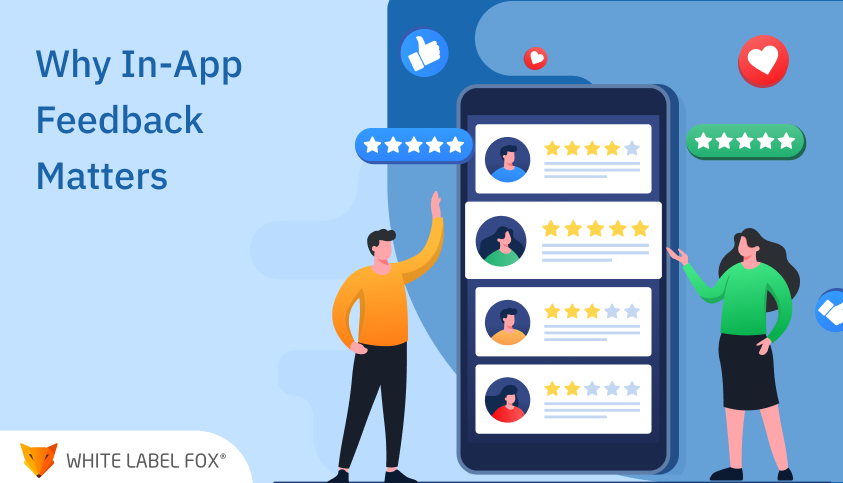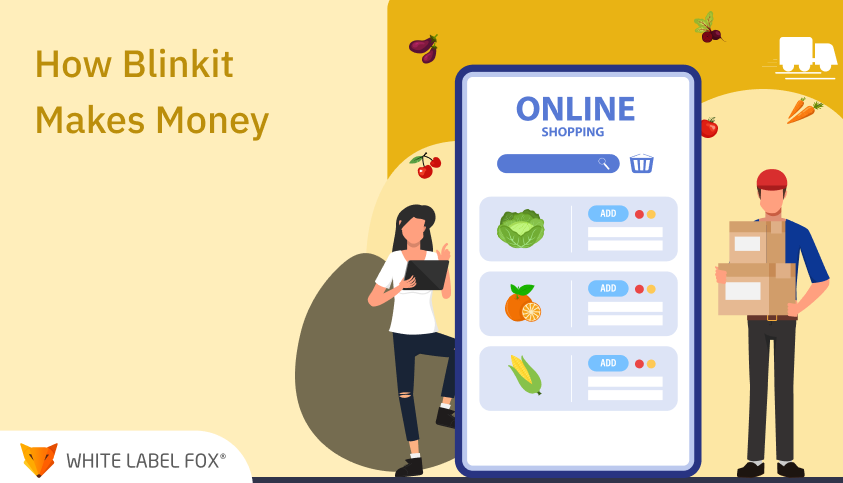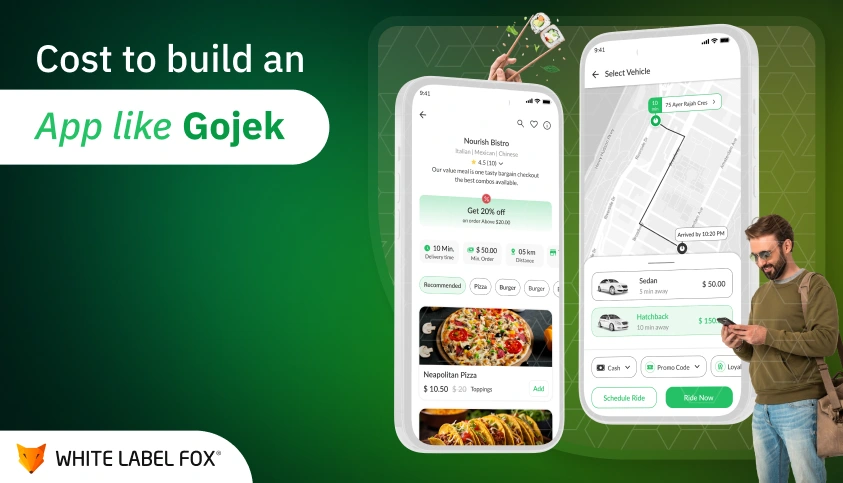Whenever users get into your app, they already have a clear picture of what they intend to accomplish. If the app fails to meet their expectations or does not help users with the task they want to achieve, you are bound to lose such users. The logic is that users want a frictionless app. If they cannot get one, they will try the next one in line.
This tells you that you need to keep your product development team on their toes. Your development personnel should be able to uncover areas of friction in the user experience and fix them as soon as possible. The question is, how can one identify areas of friction?
In the past, development teams relied on customer advisory boards and quarterly surveys. However, these approaches had their share of drawbacks. The biggest challenge was that the surveys failed to capture user frustrations in real-time, which is where in-app feedback became important. This article discusses the concept of in-app feedback. It also touches on the data safety aspect by discussing how to secure it. Let us learn.
What is in-app feedback?
In-app feedback is what the name suggests: feedback gathered directly within the application. This ranges from responses and comments collected from users directly within the application. Feedback includes ratings, reviews, bug reports, feature requests, and general comments about the user experience.
Unlike external surveys or email feedback, in-app feedback is immediate and contextual. It allows users to provide insights while their experience is fresh. Therefore, it is a crucial tool for continuous improvement, user engagement, and enhancing overall app satisfaction.
Create an Engaging Mobile App That Drives Revenue
Offer seamless user experience with a highly engaging mobile application built by us.

General vs. contextual feedback
With in-app feedback, you can take two directions. You can choose to go in the general feedback direction, or you can work with contextual feedback. Let’s take a closer look at each.
General (relationship) in-app feedback
This is the broad and overarching feedback. It gives insights that users provide about their overall experience with your app. This type of feedback is often collected through surveys, reviews, or general comment sections. It focuses on users’ overall impressions, satisfaction levels, and general suggestions for improvement. An example of general feedback is the strategically placed feedback button through which users can freely express their concerns at will.
For example, a person may use a fitness app for a month and decide to leave a review such as: ”The application offers a great number of options when it comes to the choice of workouts, but I would like more meal planning options.” Such feedback does not relate to a specific moment or function but includes a general observation of the app.
General feedback is valuable for gaining a high-level understanding of user satisfaction. It can assist in recognizing consistent friction areas or those that need enhancement. It can also be useful to get a broader perspective on your app’s general strengths and weaknesses. Still, it is somewhat less practical compared to contextual feedback since it does not have any specific context.
Businesses may use follow-up questionnaires, CSAT, Net Promoter Score (NPS), and other short surveys to gather overall feedback. These techniques give a quick picture of customer attitude, which is helpful, especially when monitoring trends in user satisfaction.
Contextual (transactional) in-app feedback
Contextual feedback is feedback given in real-time. It is based on a specific interaction or experience within the app. The feedback is highly detailed and specific. It offers measurable information on segments of user interactions. This type of feedback is obtained through notifications within the app, exit surveys, or feedback icons added to the app.
To illustrate our example further, let us consider our previously mentioned fitness application. For instance, right after the workout session is over, a user may be asked to rate the experience. Mobile app user feedback in this regard might include comments such as ”The workout was great, but the video kept buffering.” As you can see, this feedback is specific to the workout feature. It gives precise information about the user’s experience at that moment.
Contextual feedback is vital for identifying and addressing specific issues quickly. It allows developers to understand the exact circumstances under which a problem occurs, making it easier to replicate and fix. Additionally, it can help prioritize feature enhancements based on real user needs and experiences.
Contextual feedback can help solve a wide range of issues, including usability issues, mobile app security concerns, performance problems, content relevance, feature functionality, loading and response time issues, and many more.
Why should you collect mobile app feedback?
There are many reasons to collect mobile app feedback. Here are some of the reasons:
It helps you understand user needs and preferences
It helps to know what users have to say about the app and its products. Based on the user feedback, the development team can then adjust and enhance the app to fit user expectations. Always remember that in the business context, the customer is always right. In addition, tailoring products is part of trying to make them right. If users frequently request a dark mode feature, give it to them.
A feedback app helps one to identify and fix issues promptly
User feedback can highlight bugs, crashes, and other technical issues that may not be evident through internal testing. Addressing these issues promptly will help enhance user experience. A good user experience resonates with all of us. It’s so crucial that a poor interface can drive away nine out of ten app users. Digital savvy fuels a modern exodus. It shows how sleek interfaces spark mass movements in our wired age.
If several people say the app crashes when they open a specific option, you must investigate and fix it.
It enhances the user experience
Feedback provides direct insight into how users interact with your app. It highlights areas where user experience can be improved. This can involve simplifying navigation, improving design, or adding new features.
Users might suggest that the checkout process in an e-commerce app be simplified. You should investigate if that is the case and streamline it based on their feedback to make the process more user-friendly.
It helps to increase user engagement and retention
By listening to and acting on user feedback, you show that you value their input. This can increase user loyalty and retention. Active app users tend to stick around longer and spread the word. Their enthusiasm fuels growth and retention, creating a virtuous cycle of engagement.
A loyalty program or extra features can keep users engaged. They encourage long-term use.
It drives continuous improvement
Continuous feedback collection drives ongoing improvement. Regularly updating the app based on user feedback ensures it evolves with user expectations and technological advancements.
Helps your app gain competitive advantage
An app that is dynamic and evolves in response to its users’ feedback can be a great proposition in a crowded marketplace. Users who are happy with the app will provide positive feedback and share the application with others.
Users will turn to your app more often, and if it can be improved based on users’ feedback, it can compete with others and develop. Users who are satisfied with the app are more likely to provide positive feedback and recommend it to other people.
How to secure mobile app feedback?
Now, you might not believe it, but the feedback your app users give is vulnerable to attacks. Hackers want to read what your users say and see the details they share, including sensitive ones. As such, securing mobile app feedback is essential to protect user data, ensure privacy, and maintain the integrity of the feedback process. Here are some proven ways to get feedback on your mobile app:

Choose a Secure Feedback Platform
The first step is to define a feedback platform with a good security system to avoid the misuse of the feedback. Find platforms that need encryption, authentication, authorization, and data protection. You should confirm that your platform is compatible with GDPR, HIPAA, and PCI-DSS laws. A secure feedback platform also protects the data it collects. So, you won’t face any fines, and your brand will remain unscathed.
Define Clear Feedback Policies
Policies should include the expected feedback, its use, and its security. Convey these policies to users via a privacy policy, terms of service, or consent forms. This transparency ensures users understand the feedback process and feel safe providing their input.
Collect Feedback Through Multiple Channels
Utilize various feedback collection methods, such as surveys, ratings, reviews, in-app messages, or chatbots. Ensure each channel is secure and compatible with your feedback platform and policies. The channel you use should be secured for example, SSL/TLS certificates can be used to secure data transmission and protect user feedback from interception.
Filter and Validate Feedback Data
Before storing or processing feedback data:
- Filter out irrelevant, duplicate, or malicious feedback.
- Verify feedback providers’ identities to avoid spam and fraud.
- Use methods like captcha, email verification, or biometrics to confirm the feedback’s validity.
Store and Manage Feedback Data Securely
Store feedback data securely on your feedback platform or servers. Shield your data from prying eyes and unwanted alterations. Encrypt sensitive information, create secure backups, and implement strict access controls. These measures provide strong protection against unauthorized access. They keep your digital assets safe from tampering and loss. Collect and store only the feedback needed to improve the app. Follow the principle of data minimization.
Regularly Update and Patch Your App
Regular updates and patches are vital for your app’s security and its feedback system. Address security vulnerabilities promptly and ensure all components are up to date.
Conclusion
Missing vital customer insights? Put in place in-app feedback now. It’s crucial for improving your product and boosting user satisfaction. Don’t let user opinions slip away. Collect and use this data today. Your app’s success depends on it. It is time to change tactics and implement one. But as you do, please remember that the world we live in is an insecure one. Make sure you also have mechanisms in place to secure user feedback. This article has given you seven strategies to help with that.
Frequently Ask Questions
In-app feedback refers to the method by which users provide their
thoughts, opinions, or suggestions about the app’s performance,
features, or overall user experience directly within the app interface.
In-app feedback is crucial for developers as it helps them understand
user sentiments, identify issues, and improve the app. It allows for
quick adjustments and helps ensure a positive user experience,
increasing user retention and satisfaction.
There are several types of in-app feedback, including:
- Rating Systems: Allow users to rate their experience.
- Surveys and Polls: Collect structured feedback on specific
topics or features.
- Open-ended Feedback: Users can write detailed comments or
suggestions.
- Bug Reporting: Enables users to report bugs or errors
encountered in the app.
- NPS (Net Promoter Score): Measures user loyalty and
satisfaction.
- Rating Systems: Allow users to rate their experience.
- Surveys and Polls: Collect structured feedback on specific topics or features.
- Open-ended Feedback: Users can write detailed comments or suggestions.
- Bug Reporting: Enables users to report bugs or errors encountered in the app.
- NPS (Net Promoter Score): Measures user loyalty and satisfaction.
By collecting real-time feedback, app developers can identify pain
points, resolve bugs, and improve functionality. Addressing these issues
ensures that users have a better experience, which can lead to higher
retention rates and positive reviews.
- Improved User Engagement: In-app feedback systems allow users to
feel heard and valued.
- Better Decision-Making: Provides valuable insights into what
users like and dislike, helping developers prioritize changes.
- Increased Retention: Addressing user concerns promptly helps
maintain satisfaction and loyalty.
- Real-Time Data: Immediate feedback allows for faster issue
resolution.
- Improved User Engagement: In-app feedback systems allow users to feel heard and valued.
- Better Decision-Making: Provides valuable insights into what users like and dislike, helping developers prioritize changes.
- Increased Retention: Addressing user concerns promptly helps maintain satisfaction and loyalty.
- Real-Time Data: Immediate feedback allows for faster issue resolution.
Challenges include:
- Overwhelming Volume: Large amounts of feedback can be difficult
to analyze.
- Bias in Responses: Users who provide feedback may not represent
the broader user base.
- Negative Feedback: It may be difficult to address negative
feedback, but it is essential for improvement.
- Intrusiveness: Too many prompts for feedback can irritate users
and lead to abandonment.
- Overwhelming Volume: Large amounts of feedback can be difficult to analyze.
- Bias in Responses: Users who provide feedback may not represent the broader user base.
- Negative Feedback: It may be difficult to address negative feedback, but it is essential for improvement.
- Intrusiveness: Too many prompts for feedback can irritate users and lead to abandonment.
- Timing: Prompt feedback requests at moments when users are most
engaged or after a positive experience.
- Incentives: Offer rewards like discounts or credits for
feedback.
- Simplicity: Make the feedback process quick and easy, with
simple rating systems or a short survey.
- Personalization: Use personalized messages to request feedback,
showing users that their opinion matters.
- Timing: Prompt feedback requests at moments when users are most engaged or after a positive experience.
- Incentives: Offer rewards like discounts or credits for feedback.
- Simplicity: Make the feedback process quick and easy, with simple rating systems or a short survey.
- Personalization: Use personalized messages to request feedback, showing users that their opinion matters.
- Keep It Simple: Use short, clear, and non-intrusive feedback
prompts.
- Ask Specific Questions: Avoid vague questions and focus on areas
where you need insights.
- Show Appreciation: Thank users for their feedback and let them
know how it will be used.
- Use Data Analytics: Regularly analyze feedback to identify
trends and make improvements.
- Keep It Simple: Use short, clear, and non-intrusive feedback prompts.
- Ask Specific Questions: Avoid vague questions and focus on areas where you need insights.
- Show Appreciation: Thank users for their feedback and let them know how it will be used.
- Use Data Analytics: Regularly analyze feedback to identify trends and make improvements.
Developers should:
- Categorize feedback into actionable items (e.g., bugs, feature
requests).
- Prioritize based on the severity or frequency of the feedback.
- Implement changes or fixes and inform users through updates.
- Regularly evaluate feedback to ensure continuous improvement.
- Categorize feedback into actionable items (e.g., bugs, feature requests).
- Prioritize based on the severity or frequency of the feedback.
- Implement changes or fixes and inform users through updates.
- Regularly evaluate feedback to ensure continuous improvement.

















